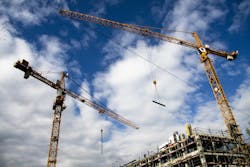Virtual Reality (VR), Augmented reality (AR) and mixed reality (MR)
According to Interesting Engineering, 2020 is set to see this technology expand further. The article also reports that AR, VR, and MR are being utilized in the industry to aid 3D modeling of structures, helping improve BIM visualization, and helping maintenance workers “see through walls.”
3D Printing
Having the ability to either prefabricate off site or directly on-site has offered cost benefits over more traditional methods, according to the article. Along with a reduction in waste, 3D printing is also not restricted by construction worker’s shift patterns. According to 3D Natives, the market is expected to reach $56.4 million in 2021.
Robotics
A robotic presence may also increase on construction sites in 2020. According to the article, by adding robots to the workforce, companies are seeing improved construction times and improved quality of builds. Although they are currently slower than humans, robots are also much safer and cheaper to use to demolish buildings.
Sustainability
According to the article, building regulations have been placing more burden on design to reduce its environmental impact and sustainability. This is a trend that will likely become more strict heading into 2020. Thermal performance materials are currently being developed, promising to make structures well insulated for a fraction of the cost.
Exoskeletons
With exoskeletons, laborers can carry more load than the human body is able to sustain. If widely adopted, it could increase the safety of construction sites. The article reports that according to ABI Research, the robotic exoskeleton market will reach $1.8 billion in 2025, up from $68 million in 2014. This year, about 6,000 suits will be sold.
Building information modeling
Building information modeling, or BIM, is the process of creating and managing information on a construction project from beginning to end. Many groups have already made BIM the standard for many of its construction project needs, allowing stakeholders to plan efficiently, design, and manage.
Source: Interesting Engineering, Wired




